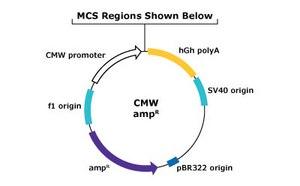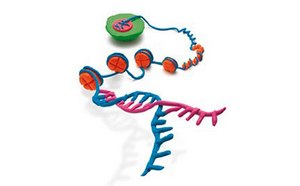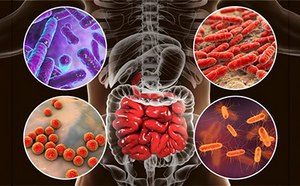Polymerase Chain Reaction (PCR) Applications

Polymerase chain reaction (PCR) is a powerful core molecular biology technique that is an efficient and rapid in vitro method for enzymatic amplification of specific DNA or RNA sequences from various sources. A standard PCR consists of target DNA, a set of synthetic oligonucleotide primers that flank the target DNA sequence, a thermostable DNA polymerase (usually Taq polymerase), and nucleotides. Using thermal cyclers, there are three stages during each amplification cycle, including denaturing double-stranded DNA (dsDNA) into separate single stranded DNA, annealing primers to the target DNA sequence, and extension, where DNA polymerase extends the DNA from the primers, creating new dsDNA with one old strand and one new strand. The strands synthesized in one cycle serve as a template in the next, resulting in a million-fold increase in the amount of DNA in just 20 cycles.
Featured Categories
Molecular cloning and protein expression methods and protocols for reliable cloning and robust protein expression from insect, bacteria, and mammalian protein expression vectors.
Epigenetic reagents and resources for investigating RNA species, DNA methylation, chromatin modifications, and histone modifications.
Comprehensive Gut Microbiome Analysis: Uncover a holistic solution encompassing sample prep, sequencing, bioinformatics, and statistics. From 16S to WGS.
Reverse Transcriptase PCR (RT-PCR)
RT-PCR, or reverse transcriptase PCR, is a variation of the standard PCR technique that involves the amplification of specific mRNA obtained from very small samples. It eliminates the need for the tedious mRNA purification process required for conventional cloning techniques. With RT-PCR, reverse transcriptase and an RNA sample are used in addition to the standard PCR reagents. The reaction mixture is heated to 37 ˚C, which allows for the production of complementary cDNA copy from the RNA sample by reverse transcriptase. This cDNA then anneals to one of the primers leading to first strand synthesis. Standard PCR follows from here in which dsDNA is ultimately generated. RT-PCR is frequently combined with real time PCR (qPCR), which is widely used for the quantification of transcript levels in cells and tissues.
Hot Start PCR
Hot Start PCR is a technology that inhibits hot start Taq polymerase or the incorporation of modified dNTPs during reaction set up until a heat activation step occurs. Various methods are available to arrest hot start polymerase activity and include, chemical modification, antibody-mediated, and aptamer-mediated methods.
Endpoint PCR for Long and Accurate Target Amplification
Endpoint PCR is often used to detect the presence of targets and relative abundance at the completion of the reaction. The limited length of sequences produced during standard PCR, approximately 5 kb, is in part overcome with the incorporation of additional factors that provide “proofreading” activity. Long and accurate (LA) PCR incorporates the use of a second thermostable polymerase with 3′→5′ exonuclease to repair terminal nucleotide misincorporations, resulting in significantly increased fidelity and the ability to amplify DNA targets up to 40 kb in length.
Visit our document search for data sheets, certificates and technical documentation.
Related Articles
- This page shows PCR and RT-PCR amplification troubleshooting.
- Digital PCR enables absolute quantification and detection of minority sequences against similar majority sequences, such as somatic mutations.
- Ethidium bromide is a well-known and widely used fluorescent dye in biotechnology research.
- The polymerase chain reaction is one of the most widely used techniques in molecular biology. The PCR process consists of three main steps, Denaturation, Annealing & Extension
- See All (60)
Related Protocols
- Learn standard PCR protocol steps and review reagent lists or cycling parameters. This method for routine PCR amplification of DNA uses standard Taq DNA polymerase.
- Annealing is the process of heating and cooling two single-stranded oligonucleotides with complementary sequences.
- Learn about methods for calculating oligonucleotide melting temperature (Tm).
- PCR workflow's variability influenced by sample source, reverse transcription, and assay design, impacting reproducibility.
- Extract-N-Amp kit protocol provides rapid DNA extraction yielding PCR-ready samples in 15 minutes with optimized PCR ReadyMix.
- See All (58)
Find More Articles and Protocols
How Can We Help
In case of any questions, please submit a customer support request
or talk to our customer service team:
Email custserv@sial.com
or call +1 (800) 244-1173
Additional Support
- Chromatogram Search
Use the Chromatogram Search to identify unknown compounds in your sample.
- Calculators & Apps
Web Toolbox - science research tools and resources for analytical chemistry, life science, chemical synthesis and materials science.
- Customer Support Request
Customer support including help with orders, products, accounts, and website technical issues.
- FAQ
Explore our Frequently Asked Questions for answers to commonly asked questions about our products and services.
To continue reading please sign in or create an account.
Don't Have An Account?


